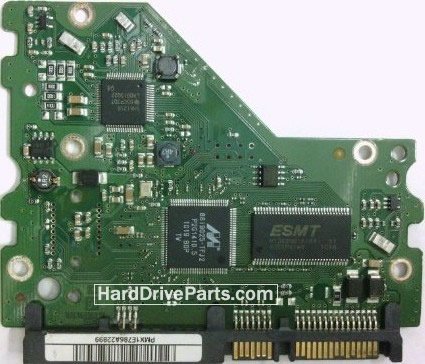Categories
Who's Online
Share with friends
How can I identify a faulty HDD PCB?
A hard disk drive (HDD) is a complex device that uses multiple components to store and retrieve digital data. One of these components is the printed circuit board (PCB), which acts as a bridge between the internal electronics and the external interface. The PCB contains various chips, connectors, and firmware that control the motor, read/write heads, and data transfer operations of the HDD. If the PCB fails or malfunctions, the HDD may stop working or exhibit errors that can lead to data loss or corruption. Therefore, it is important to know how to identify a faulty HDD PCB and take appropriate actions to fix or replace it.
Here are some signs that may indicate a faulty HDD PCB:
1. The HDD does not spin up or make any noise when powered on. This could mean that the motor controller chip on the PCB is damaged or the power input is not reaching the drive.
2. The HDD spins up but does not get detected by the computer or shows incorrect capacity or model information. This could mean that the firmware on the PCB is corrupted or incompatible with the system.
3. The HDD makes clicking, buzzing, or other abnormal sounds during operation. This could mean that the read/write head is not moving properly or the signal processing circuitry on the PCB is faulty.
4. The HDD works intermittently or freezes during data transfer or access. This could mean that the data buffer or cache on the PCB is defective or overloaded.
5. The HDD smells burnt or shows visible signs of damage, such as burnt chips, swollen capacitors, or broken traces. This could mean that there was a power surge or short circuit that damaged the PCB or other components inside the drive.
If you encounter any of these symptoms, you should stop using the HDD immediately and avoid any attempts to open or repair it yourself, as this may cause further damage or void the warranty. Instead, you should seek professional help from a data recovery service or a qualified technician who specializes in HDD repair. They can diagnose the problem, extract any salvageable data, and recommend a suitable solution, such as replacing the PCB with an identical or compatible one, repairing the damaged components, or transferring the platters to a new drive.
In conclusion, identifying a faulty HDD PCB requires some knowledge of the symptoms and causes of common failures, as well as caution and expertise in handling delicate electronic devices. By being aware of these issues and seeking timely assistance from reliable sources, you can minimize the risk of losing your valuable data and ensure the longevity and reliability of your hard drives.

